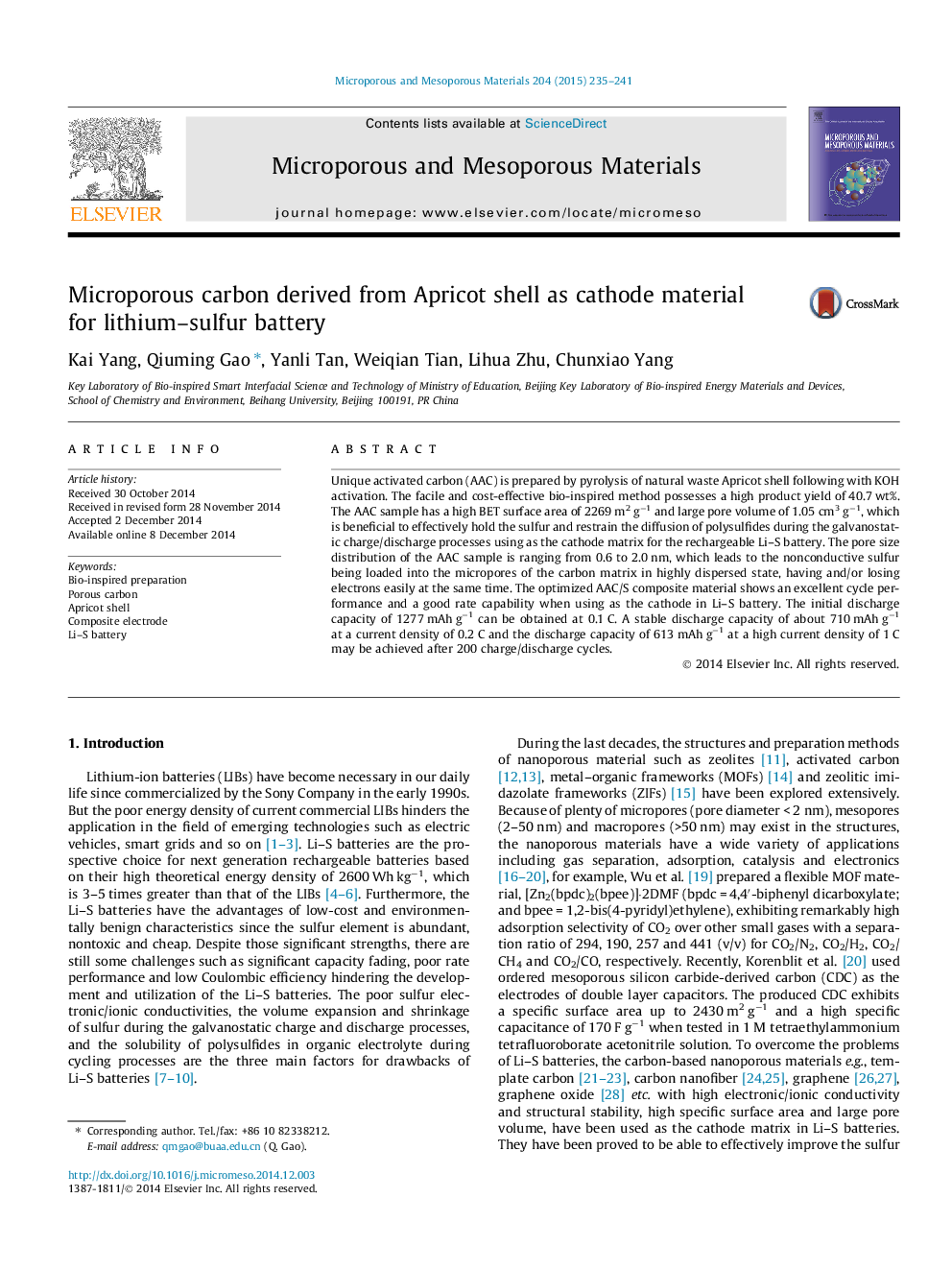| Article ID | Journal | Published Year | Pages | File Type |
|---|---|---|---|---|
| 72756 | Microporous and Mesoporous Materials | 2015 | 7 Pages |
•Bio-inspired method is used to prepare microporous carbon AAC.•The AAC has high surface area and large pore volume.•The AAC/S composite electrode shows good performance in the Li–S batteries.•The resultant AAC is a suitable matrix for Li–S batteries.
Unique activated carbon (AAC) is prepared by pyrolysis of natural waste Apricot shell following with KOH activation. The facile and cost-effective bio-inspired method possesses a high product yield of 40.7 wt%. The AAC sample has a high BET surface area of 2269 m2 g−1 and large pore volume of 1.05 cm3 g−1, which is beneficial to effectively hold the sulfur and restrain the diffusion of polysulfides during the galvanostatic charge/discharge processes using as the cathode matrix for the rechargeable Li–S battery. The pore size distribution of the AAC sample is ranging from 0.6 to 2.0 nm, which leads to the nonconductive sulfur being loaded into the micropores of the carbon matrix in highly dispersed state, having and/or losing electrons easily at the same time. The optimized AAC/S composite material shows an excellent cycle performance and a good rate capability when using as the cathode in Li–S battery. The initial discharge capacity of 1277 mAh g−1 can be obtained at 0.1 C. A stable discharge capacity of about 710 mAh g−1 at a current density of 0.2 C and the discharge capacity of 613 mAh g−1 at a high current density of 1 C may be achieved after 200 charge/discharge cycles.
Graphical abstractFigure optionsDownload full-size imageDownload as PowerPoint slide
